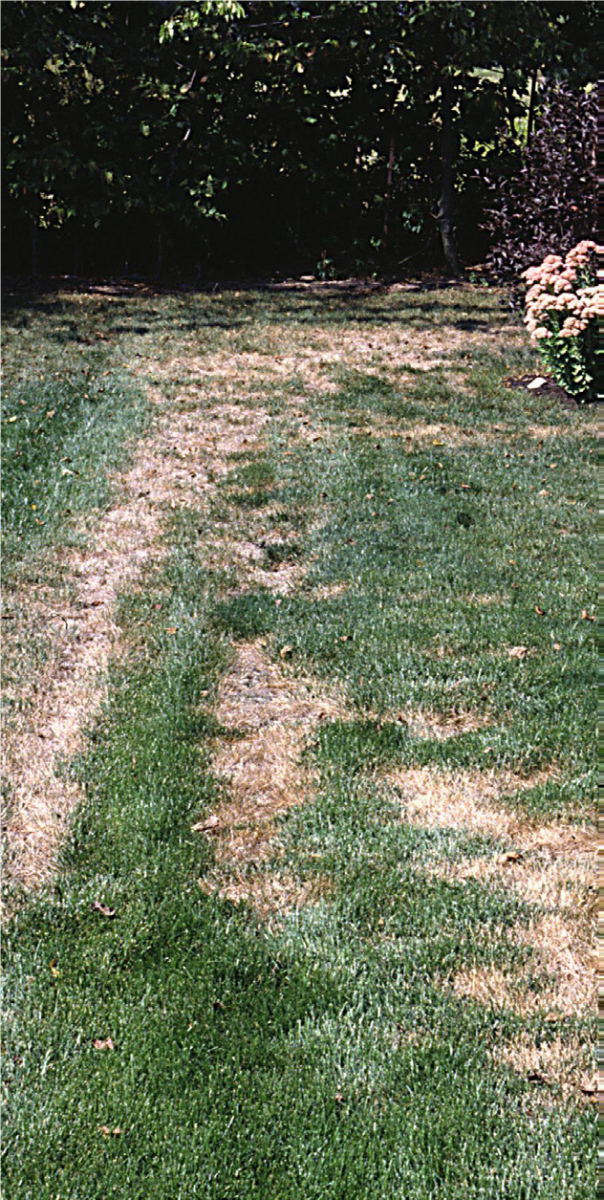Hairy chinch bugs, (Blissus leucopterus), are probably the most destructive pest of home lawns. The adults are small (1/16" long), black with white wings and red legs. The small nymphs are without wings and appear completely red. These insects damage grass by piercing plants with their needle-like mouth-parts and sucking plant juices. Rainy weather hinders chinch bug development, so damage is less likely to occur during wet periods. Chinch bugs prefer to feed on bluegrass and fescues and thrive sunny areas and lawns with thatch.
Life Cycle and Damage
Spring: The overwintering adults emerge from sheltered areas and seek grass plants. Egg-laying occurs when temperatures reach 70F, generally in May.
Summer: The egg hatch into young nymphs which do the greatest amount of damage. Damage to turf is first observed in June; yellowish areas soon become dead patches. During warm weather, turf can be damaged quickly as the bug population multiplies. New adults appear in July. Expect more turf damage when a second generation of chinch bug appears in August.
Fall: Adults of the second generation appear in September and soon seek overwintering sites. Large numbers of adults are often seen around building foundations at this time of year.

fourth instar, fifth instar, winged adult, shortwinged adult. Credit: David Shetlar, The Ohio
State University, Bugwood.org.

David Shetlar, The Ohio State University, Bugwood.org
Management
IPM Strategies:
- Cultural Practices - Cultural practices are available to keep hairy chinch bug numbers in check:
- Proper lawn care is key. Keep a well-fertilized and nutrient rich soil, nutrient rich soil, but do not over fertilize. Testing your soil prior to fertilizing is recommended. Grass should be mowed no shorter that 3".
- Using endophyte-enhanced turfgrass seeds as part of your management program can help reduce the damage caused by hairy chinch bugs. Endophyte-enhanced seeds can negatively impact the health of livestock, so it is imperative that you follow all label directions regarding where you use these seeds.
- Monitoring - Find an area of the lawn where living grass meets dead grass. Push one end of an open-ended coffee can into this area and fill the can with water for approximately 10 minutes. Watch for chinch bugs floating in the can. If 10 or more are found, you have a problem.
- Biological Practices - The big-eyed bug is the primary predator of hairy chinch bug nymphs and adults.
- Chemical Control - Sites which normally have chinch bug problems can be treated preventively in May and early June, killing overwintering adults and young nymphs before they cause significant damage. However, you should sample the area to determine chinch bug density prior to applying any control measure.
Consult your county Agricultural Field Specialist for specific recommendations.

Stop! Read the label on every pesticide container each time before using the material. Pesticides must be applied only as directed on the label to be in compliance with the law. Contact the Division of Pesticide Control at (603) 271-3550 to check registration status. Dispose of empty containers safely, according to New Hampshire regulations.
Download the resource for the complete factsheet.
